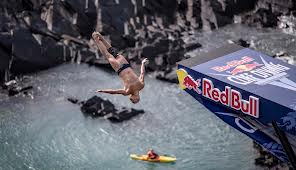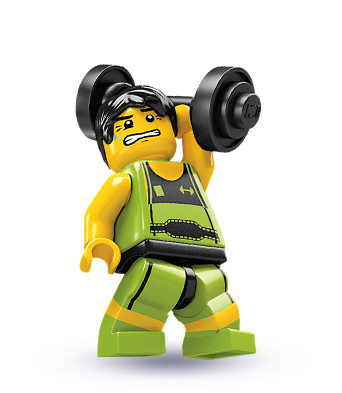|
Gravitational Potential Energy
Objectives
• Know that objects raised above the ground have
gravitational potential energy.
• Be able to select and use the formula Ep
= m × g × h to
calculate the change in gravitational potential energy for an object.
• Be able to describe the energy changes for falling
objects, or objects launched into the air.
Task 1 - Recap / Starter
| Discuss with the person next to you: • The energy change taking place when a diver climbs
up a ladder to a 10m diving board.
• The energy change taking place when a diver jumps
from a 10m diving board.
• The energy changes that take place when the diver
hits the water. |
 |
Task 2
Think about what happens when we release the object.
As it falls it gains kinetic energy, and by the time it
reaches the ground it has gained quite a lot of kinetic energy.
It follows that this energy must have come from
somewhere. It seems that the object had some energy, just because
it had been raised above the ground. Let's call this energy
"gravitational energy".
Write a title
Gravitational Potential Energy in your exercise book.
Copy the two sentences below into your book and make a note of the formula:
|
The higher an
object is above the ground, and the greater the mass of the
object, the more gravitational energy it has. The
amount of gravitational energy an object has is calculated
using the formula below:
|
|
Ep = m ×
g ×
h |
Ep =
change in gravitational potential energy (J)
m = mass (kg)
g = gravitational
field strength (N/kg)
(this is 9.8 N/kg on earth, but we sometimes
use 10 N/kg)
h = change in height (m) |
Task 3
Calculate the change in gravitational energy for each of
the following problems, and state whether energy is gained or lost in
each case.
|
1. A 0.4kg book falling from a 2m shelf to the ground
2. A 45kg student climbing up a 5m ladder
3. A 90kg adult climbing up a 5m ladder
4. A cliff diver, of mass 85kg, falling 35m into the
water.
5. A 5kg bar-bell lifted by 40cm |
 |
|
 |
When you have finished, think about how you could
calculate the speed each object would hit the ground, if it were to
fall.
Task 4
When an object is dropped, its GPE is turned into KE as
it falls. When it has reaches the ground all of the GPE has been
changed into KE. This idea is used to calculate the final velocity
of a falling object.
Your teacher will show you how to calculate the velocity
of the book from Q1 as it hits the floor, and the diver from Q4 as he
hits the water.
When you are happy you understand, try solving
the
following problems:
|
1. A 65kg olympic diver jumps from a 10m diving board.
a) What is his change in GPE?
b) What speed will he hit the
water (use the formula for kinetic energy).
2. A 0.5kg book falls 1.8m from a shelf.
a) What is the change in GPE?
b) What speed will the book hit
the ground?
3. A toy rocket, of mass 0.2kg, is launched into the air.
It leaves the ground at a speed of 40m/s.
a) What is the kinetic energy of
the rocket as it leaves the ground?
b) What will the KE of the
rocket be at the very top of its path?
c) What will the change in GPE
be at this point?
d) Find the change in height of
the rocket, and hence its maximum altitude.
|
|

